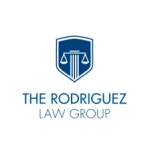Following the passing of someone, the legal process of settling an estate consists of a collection of necessary procedures guaranteed to correct asset distribution and debt resolution. The court-supervised process known as probate verifies a will, names an executor, and supervises the fair management of the financial affairs of a deceased individual. Without appropriate direction, especially considering legal complexity and possible conflicts, this procedure can become overwhelming. Knowing every step of probate guarantees that all legal obligations are fulfilled and helps you negotiate the system effectively.
Initiating the Probate Process
Probate starts when a petition for the suitable court to appoint an executor or administrator is submitted, therefore acknowledging the will. If a will exists, it must be filed alongside the petition to verify its legitimacy. Courts look at whether the document satisfies legal standards, including witness validation and signatures. Under state rules controlling intestacy, the court assigns an administrator to handle the estate when no will is available. Legal authority to handle the deceased’s financial affairs is acquired by the executor or administrator upon judicial approval of the appointment. This person takes on significant responsibility, including asset collection, beneficiary notifying, and creditor claim management. Probate operates under particular legal deadlines; hence, any delay in starting the process can extend the wealth distribution. Executors have to act promptly to prevent needless problems that can affect heirs and other engaged parties.
Identifying and Valuing the Estate’s Assets
Determining the total value of the estate depends on knowing exactly what the deceased left behind. Bank accounts, real estate, personal property, and investments not transferred through a trust or designated beneficiary arrangement are commonly considered assets subject to probate. To establish correct values, this phase calls for rigorous recordkeeping and, occasionally, professional assessments. Executors have to be able to tell non-probate from probate assets. Typically avoiding probate, properties held in shared tenancy, retirement accounts with named beneficiaries, and assets put in a living trust allow immediate transfer to heirs. Through appropriate classification of estate assets, the executor guarantees legal conformity and streamlines the distribution procedure.
Handling Debts, Taxes, and Legal Obligations
A major component of probate is paying off debt and financial responsibilities. Valid debts must be paid before assets can be dispersed to beneficiaries; creditors have a designated period to file claims against the estate. This covers credit card totals, medical expenditures, and mortgages. Executors have to carefully go over all claims to make sure only reasonable debts are honored, therefore avoiding needless draining of estate money. The probate process also incorporates tax requirements. Federal and state taxes could be due depending on the size of the estate and applicable rules. To avoid legal issues, final income tax returns and, in some cases, estate tax returns must be filed. Legal repercussions could follow from an executor who neglects these obligations, therefore stressing the need for thorough financial control during probate.
Resolving Disputes and Addressing Legal Challenges
Complicating probate processes are disagreements among beneficiaries, doubts about the legality of the will, and creditor challenges. Family conflicts frequently arise when heirs dispute asset distribution or suspect undue influence in the creation of a will. Legal disputes could also originate from those asserting to have been unlawfully deprived of an inheritance. Managing these conflicts in line with legal processes falls to executors, who also guarantee that the estate’s management stays on target. Sometimes, as problems get more intense, mediation and court interventions become required. Many estate representatives see experts to negotiate difficult probate issues in order to avoid expensive judicial fights. A probate lawyer protects the interests of all the involved parties and offers valuable guidance on quickly settling conflicts.
Distributing Assets and Closing the Estate
When no will exists, the last phase of probate is distributing assets to beneficiaries as stated in the will or decided upon by state rules. The executor has to get court clearance to guarantee that all debts, taxes, and administrative charges have been correctly paid before distribution occurs. Legal instructions then direct any leftover assets to heirs. Once assets are divided, the executor files a final accounting report to the court outlining all transactions and attesting to the correct management of the estate. Upon approval, the estate is officially closed, and the executor’s responsibilities conclude. Correct paperwork and following legal rules guarantee that the probate process reaches a legal and lawful resolution.
Conclusion
Navigating probate calls for consideration of legal requirements, financial commitments, and beneficiary’s interests. From filing initial petitions to dispersing assets, every action calls for accuracy and organization to avoid needless delays or conflicts. Knowing probate processes guarantees that all legal obligations are satisfied and helps you to manage estate affairs effectively. By carefully managing debts, resolving potential conflicts, and overseeing asset distribution, you help to ensure a smooth probate process that honors the deceased’s intentions while protecting benefi







